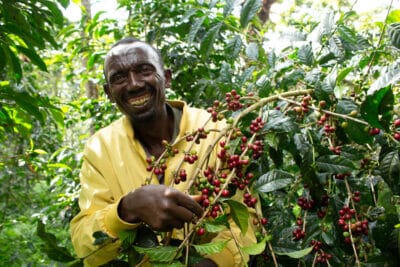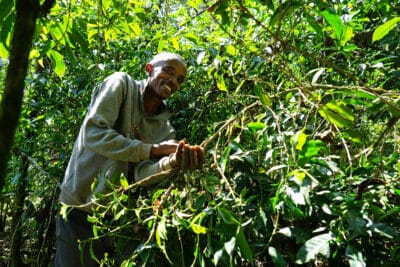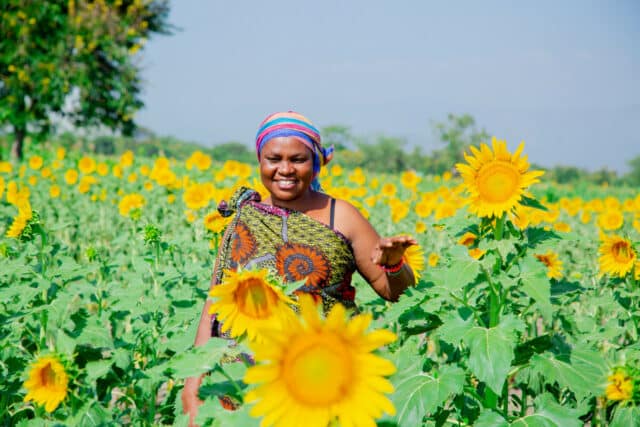Expert view
Ethiopia
4 May 2022
Living landscapes: restoring the exhausted rangelands of the Central Rift Valley
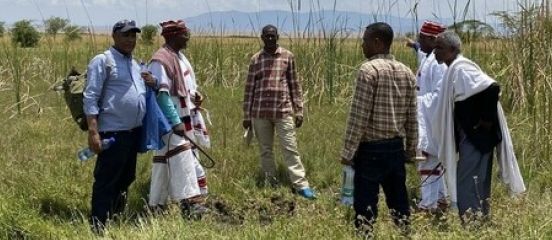
By Dan Collison, Chief Executive
Travelling south from Addis Ababa through Ethiopia’s Great Rift Valley, it’s clear to see the pressure that the land is under. A rapidly growing population, the expansion of agricultural activity, unmanaged grazing, the use of agrochemicals, conflicting land use policies and priorities, and now a devastating drought. From the deforested mountain slopes to the hard-baked valley floor and the shrinking lakes, the land looks exhausted.
The UN published data this week that shows human damage to the planet’s land is accelerating, with up to 40% now classed as degraded, while half of the world’s people are suffering the impacts of this decline in soil health, biodiversity and tree cover¹.
But it’s not irreversible, and Integrated Landscape Management (ILM) is increasingly seen as part of the solution. ILM is the combination of a wide range of interventions that are designed to restore and sustain ecosystem integrity, boost agricultural productivity and sustainable rural development, and increase the resilience of food systems.
Farm Africa has been developing this approach over a number of years, through our work in the Bale Eco Region of south-western Ethiopia, in the Nou Forest in Tanzania, and now with the support of the Swedish Government and a network of partners, in the Central Rift Valley and the Majang Forest Reserve.
This week I saw this work in action, and it’s bringing results. Once again I’ve witnessed the deep levels of technical expertise that exist within the Farm Africa teams, and those of our partners, from community mobilisation, to advising on standard fishing net gauges to ensure healthy fish stocks, to establishing cattle fattening cooperatives.

ILM works because it visibly protects and restores the environment, while at the same time increasing household income through diversified and sustainable livelihoods.
Where communities can see that a healthier natural environment also provides for a better income, then the incentive to protect and restore the land is increased.
This multi-layered approach to community development and landscape regeneration is not just a series of stitched together activities. Each effort to diversify household and community livelihood reduces pressure on the environment and is carefully designed to respond to local markets, so it’s genuinely integrated.
The range of interventions is astonishing: improving quality and processing of fisheries; introduction of small-scale irrigation for vegetable production; climate-smart agriculture to increase productivity; soap making; community tourism; fuel-efficient stove manufacturing, watershed and slope protection to reduce run-off; and community rangeland management.
Many of the income-generating activities are focussed on women and result in establishing Village Savings and Loan Associations (VSLA). I saw how the income from these VSLAs had helped women to invest in goats, poultry, seedling production and high quality soap manufacture. And each step towards a diversified set of livelihoods reduces the need to chop down trees to sell as charcoal, or coax another season of low-yield maize out of the denuded land.

Rangeland management
The rangeland management work is at the heart of ILM. I visited Keraru village on the southern edge of Langano Lake. Village leaders said that three years ago, the pasture land around the village had been completely destroyed – denuded of vegetation, barren hectares of hard-baked soil devoid of wildlife.
The community decided to take action, and with support from Farm Africa and our partner SOS Sahel, the landscape has been transformed. Cattle grazing is managed rather than the old practice of ‘free grazing’; soil is over-sown with new varieties of grass seed; grass is allowed to mature and its seeds to shatter; a benefit sharing agreement gives the community access to the new grasslands for sale or for animal feed.
And change has come very quickly as the land and biodiversity recovers.
Natural springs that had long been dry are bubbling again, hippo, ostrich and migratory birds have returned to the lake shores.
But it’s not just a re-greening of the land, the landscape still works for the community as they now undertake cattle fattening which has dramatically increased incomes. Three years ago, the livestock cooperative of 521 members was rather disorganised and had around 75,000 Ethiopian birr in savings ($1,500 USD).
Now after three rounds of cattle fattening, which includes taking cattle from the drought ravaged south of the country and the sale of grass fodder, they have 2.5 million birr ($48,000) and have plans to scale up the fattening business, and introduce dairy and apiary.
This scale of income and savings also gives the cooperative access to further loans and capital. And it shows that there is substantial profit to be made from restoring the environment.
Looking out at the expanse of green stretching away to the lake in the far distance, the village elder Hika Letamo said to me, “There’s no such this as dry lands, just dry brains”.
Climate-smart agriculture
Alongside the rangeland management I also saw how climate-smart agriculture is regenerating soils and increasing incomes. A network of 100 farmers have been promoting the benefits of small-scale irrigation and vermiculture – the power of worms!
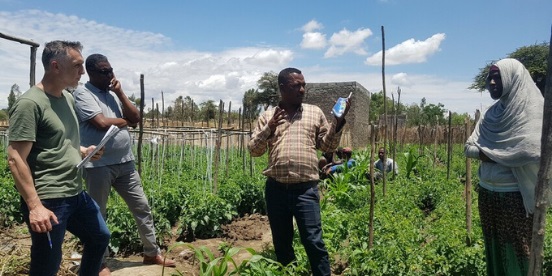
In the past farmers were generating meagre returns from rain-fed maize production, but the rich vermi-compost can supercharge output – and, it’s completely organic. The specialist worms are multiplied and distributed to neighbouring farms. One lead farmer, Ato Dita, explained how with the application of vermi-compost he now gets 12 quintals (1,200 kilograms) of maize per acre, whereas in the past with ever more expensive chemical fertilisers, the yield was eight quintals (800 kilograms) per acre.
Community level projects like this can bring about dramatic change – and this programme is reaching 64,000 people. But the real transformation happens when these approaches are replicated and scaled up through government promotion and policy.
The success of this project has attracted the attention of regional authorities in Oromia, with participating areas being considered to be ‘centres of excellence’ in the fight to simultaneously restore the environment and increase food security.
As a result, our experience will be spread to other communities, and inform wider policy – and that’s an achievement of which Farm Africa and our partners are very proud.
Follow Dan Collison on Twitter @DanFarmAfrica.
